 Sámegillii
Sámegillii  På norsk
På norsk
Articles about Sami school history
Part 18 - printed in Ávvir 08.10.2010
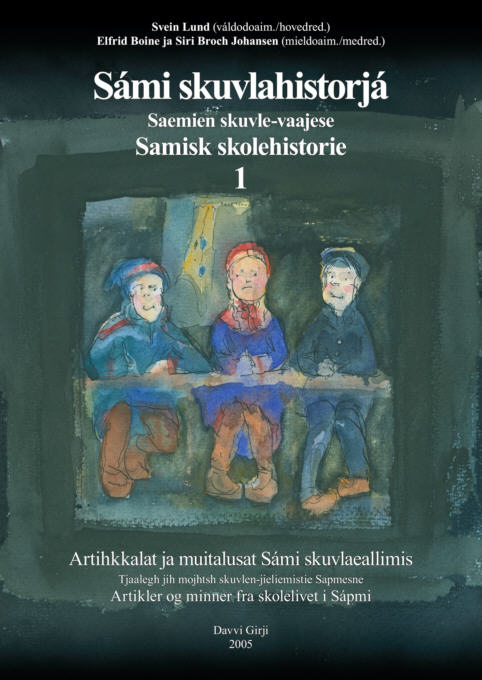 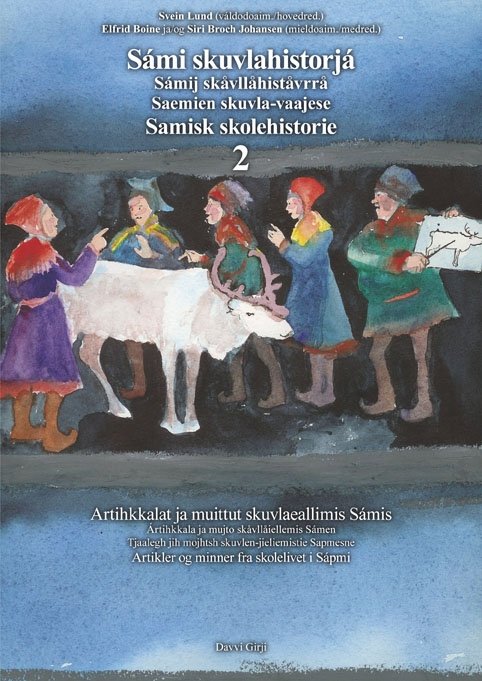 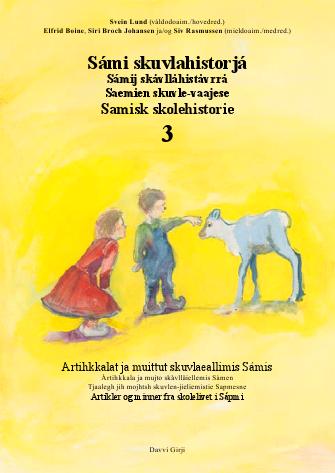 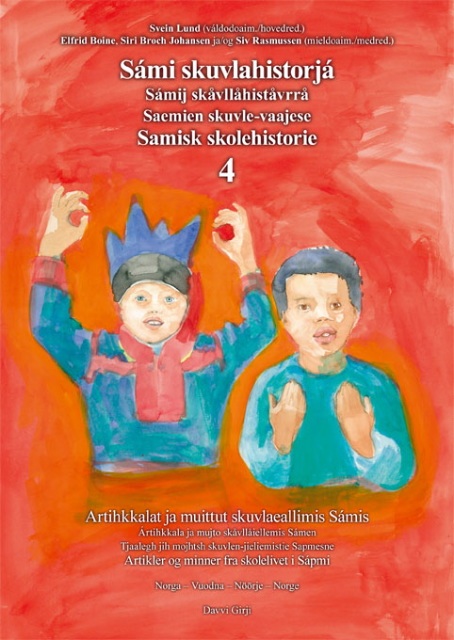 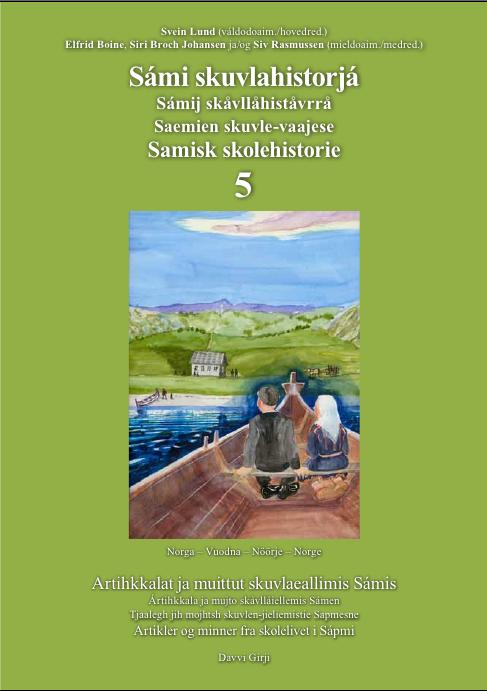
Do you know Sami school history?Sámi skuvlahistorjá / Samisk skolehistorie (Sami School History) is a series of books published by the publishing house Davvi Girji. In about 200 articles in 5 volumes there is told about the experiences of Sami children in Norwegian schools, and about the changes in the educational politics of the Norwegian authorities towards the Sami population. The books are published with parallell text in Sami and Norwegian language.In this web site some of the articles of the first book are also published in English. It would be too much to translate it all, so to make this history available to a greater public, we are translating a series of newspaper articles, which sorted by topics make a summary of stories in the books. So far there are 28 articles published in Sami language by the Sami newspapers Min Áigi and Ávvir. They are also published here in Norwegian and the English version will be published gradually as they are translated. These articles are edited by the main editor, Svein Lund. Besides him the editing board of the book series consist of Elfrid Boine, Siri Broch Johansen and Siv Rasmussen. |
The politics of Norwegianization did not come of itself. Before the Norwegianizing gained ground in the end of the 19th century, there had been teaching done in Sami for a long time, and all along there were people arguing that the Sami should be offered teaching in their mother tongue all along. Therefore the Norwegianizers had to argue to why Sami and Kvens should be Norwegianized, and they did so eagerly in books, newspapers and letters to the authorities. In the previous article we demonstrated how they were working in the 18th and 19th century. Following are some examples from the period 1915-57, but you could find many more, both from before and after that time.
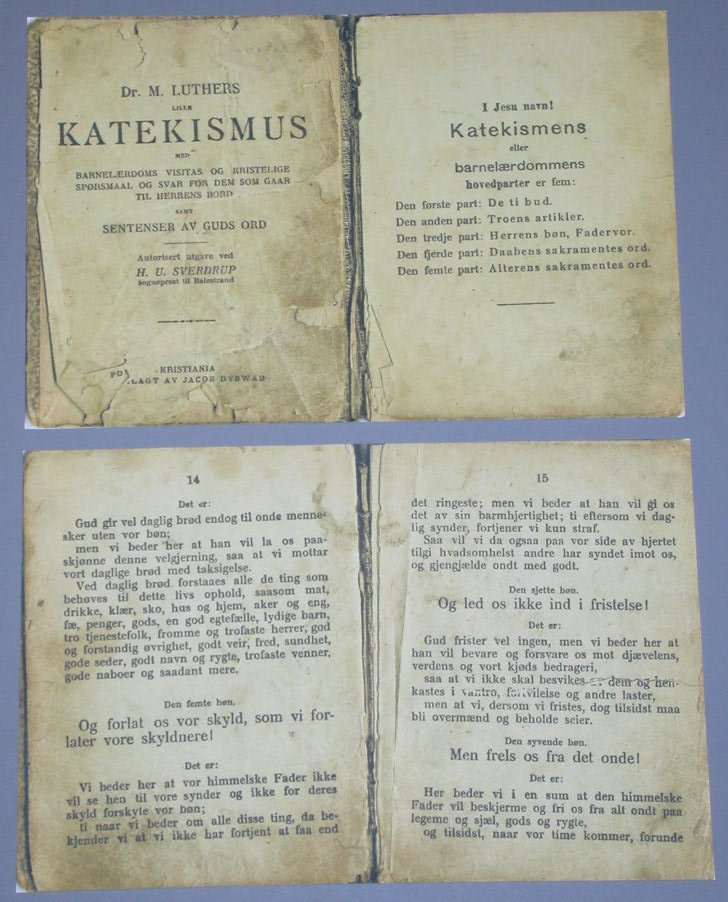 |
The catechism was for many years among the most important textbooks, and Sami pupils often had to read it in Norwegian. (Porsanger museum) |
Johannes Reiersen was headmaster at East-Finnmark county school, and published the book Skolen i Finmarken. Kortfattet fremstilling av skolevæsenets utvikling i Finmarken 1814-1914 (The School in Finmark. A short presentation of the developent of the educational system in Finmark 1814-1914) in 1915. The book is a strong defense of the educational politics at that time, the politics of Norwegianization.
The Lappish (Sami) language is indeed no language of culture; it owns no literature. It lacks the means which could serve to impart a people to education and manners. In his time Stockfleth believed it would be possible to bring about a Lappish literature, and that at a certain rate, while Skaar apparently was of the opinion that it would be sufficient once one had translated a certain amount of psalms and religious books to Lappish.
But this was a big mistake. It was and is as the Diocese Board of Directors said, in the Lappish nation's own interest that the school should work to spread the knowledge of the Norwegian language.
What it was and is really concerning, is nothing less than to raise the Lapps to the same cultural level as the Norwegian people, and thus not be inferior to the Norwegians, but gain the ablility to compete and to the same rights and advantages as Norwegians, both in the state and in the municipalities.The work of Norwegianization has gone closely together with the work of enlightenment of the people. Therefore the men that have been the best advocates of the enlightenment of the people, have also been supporters of the Norwegianization; because they have wished to give the same schooling and enlightenment to all the people in our country; without making distinctions between persons....
Those who on the other hand have wished to yield to the desire of the Lapps to get as much as possible of the teaching in school in Lappish, have generally not been pioneers in the field of enlightenment of the people, but rather held back. One might say that their work have been founded on a false premise, and their beliefs have, although unconsciously, originated from weakness and indifference. (Johannes Reiersen, SSH-4)
In 1918 a small book was published, which later almost has been forgotten, although it was written by a famous author. The book was called "Smaa breve fra Finmarken" (Small letters from Finmark), and the author was the poet Nils Collett Vogt. He was a socialist and wrote anthems for the labour movement, but when he visited Finmark he only had contact to the elite. His publication shows how the Norwegianizers argued and how they ridiculed those who were defending teaching in Sami and Kven.
One language in Finmark! That is the aim. For the last ten years, and in particular after the establishing of the boarding school, the work of Norwegianizing up here has seriously begun to make headway. As far as one has come at this point, that the greater part of the younger generation speaks Norwegian with ease, and if the development continues in the same direction as it has until now, the aim might be reached within twenty years. To wish to incorporate Lappish (Sami) and Kven in Norwegian school under these circumstances, is nothing but false sentimentality, bred in feminine brains in the south. (Extract from Nils Collett Vogt's book, SSH-4)
Many have asserted - and some still do - that Sami and Kvens are about to disappear, as everybody is melting into one people, obviously with the Norwegian culture as the foundation. Bjarne Hofset was among the most keen advocates of this view, and in 1920 he published the book "Finmarkens fremtid" (the future of Finmark), which we are quoting here:
I believe that the blend of people which here is melting into a new unity should be given the access to development to the extent that it over a few generations proves suitable for development.
The aim should be to develop a healthy, well developed and joyous group of the Norwegian people up here.
There have been struggles, strangely enough, about the language when it comes to ensure the people here the necessary guidance. Certain men wishes to conserve the mountain-Lapps (mountain-Sami) as a sort of museum specimen which one in no way should deprive of anything of what is characteristic of it's antiquity. No one would take an axe from the time of Harald Haarfagre steel plate, modernize and put a handle on it and put it to handy use. One would preserve it as a grand treasure in it's museum and free it from all danger. This is how these men would like the Sami or the Lapps to be treated — a precious museum gem, which one quite cleverly need to teach the catechism and explanations as they surely would go astray on their journey home to God. But do not touch them more than absolutely necessary to yield Our Lord the strictly necessary help when these people are to be called down into the eternal peace. Shibboleth is: Preach the Lappish words of God to them — then let them die in peace. There should be no doubt that the development must be founded in the Norwegian language and the Norwegian polity and cultural aids.
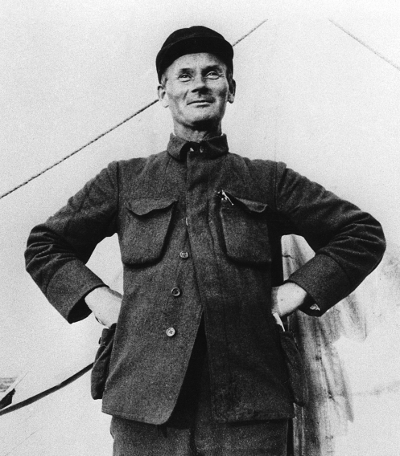 | Bjarne Hofseth (Photo: Porsanger museum) |
Bjarne Hofseth continued the struggle against the Sami language, and wrote in the newspaper Finmarkens amtstidende in 1935:
I observe a new and even more unfortunate language confusion than the one that forced the New Norwegian language upon us rising.
The Western-Norwegians are so pleased with their old language experiment that they would like to expand their enterprise and provide a new and even finer New Norwegian here in Finmark - Sami.
I hope everybody who have good wishes for the future people of Finnmark will protest against this nonsense.
In fact only one people exists in Finmark, namely the Norwegian.
Quash the old nonsense of a backward Mongolian people who ought to be treated and Norwegianized with special methods.
Make sure the Sami is treated with the reverence befit for interesting relics of the past.
But give the youth the chance to get the right side up and on come on an equal footing with other Norwegian youth.
Instead of establishing a kind of special Sami school one should now carry out the plan that in it's time was proposed in my book «Finmarkens fremtid» page 105-107,
concerning a boarding school where the district-youth of Finnmark can get schooling until the final upper secondary examination. That is what we need.
A Sami lower secondary school can do nothing but harm to everybody but the emissaries.
The youth among the mountain-Lapps (mountain-Sami) and naturally among the other branches of business in Finmark are speaking Norwegian well now. To start to make a kind of Sami secretariat is something everyone should protest. (Article by Bjarne Hofseth, SSH-4)
Christen Brygfjeld was Director of schools in Finnmark from 1923-33. Hardly any senior state official in Norway has made so many negative statements about the Sami people as he did. Here are a few examples:
«The demand to establish a Lappish (Sami) Folk High school did not come from the Lapps in Finmark originally, but from Norwegians outside the county with little or no knowledge about the conditions in the district. They believe it possible to cultivate this small sparsely residing nature people and change it into a people of culture with the foundation in it's own language. The Lapps have had neither the ability nor the will to use their
language as written language.»
«It [the Sami people] had no ability on it's own to rise to a higher level of culture without passing through the Norwegian language and the Norwegian culture. [...]
It has always been the destiny of a small, weak people of nature, that it can never last when living among a stronger cultural people. For the Lapps it has happened in the same manner. [...] The few individuals who are left of the original Lappish tribe are now so degenerated that there is little hope of any change for the better for them. They are hopeless and belong to Finnmark’s most backward and wretched population, and provide the biggest contingent from these areas to our lunatic asylums and schools for the mentally retarded.» (Henry Minde's article, SSH-1)
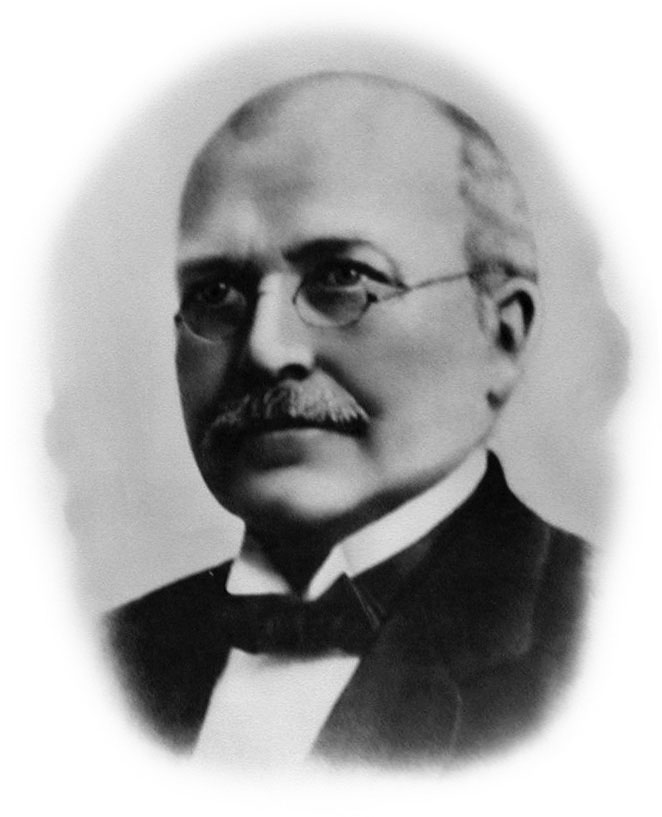 |
Christen Brygfjeld was and eager Norwegianizer, both as a teacher and as the Director of schools. (Photo borrowed from the county governor in Finmark.) |
David Stubseid was a teacher in Karasjok until ca. 1946. He was a harsh defender of the Norwegianization. Ater the war he worked in Fredrikstad. When the School Coordination Committee proposed teaching in Sami in 1948, he wrote a long letter to the Ministry of Church and Education where he opposed this proposition:
If Sami is now to be introduced in school in the mixed language districts, the Sami there will be excluded from the further education the Norwegian schools can offer the youth, the Sami will in other words, be excluded from society. The Sami who have had their education in their mother tongue, and contemporaneously learned a new, foreign language - Norwegian -, are not able to learn this foreign language well enough to be able to compete with the Norwegian pupils, who have Norwegian as their mother tongue and have only been working with that in school. (Not yet published)
Hans Rønbeck was a local politician in Karasjok in the1950-70's. This quote is from an interview in the newspaper Lofotposten 1957.
- I make no secret of the fact that I look upon it as the final aim that the Sami population will be absorbed into the Norwegian - that will moreover happen whatever we might wish for - and that the Norwegian language gains at the expense of the Sami. ...
- This is not a matter of depriving the Sami of their mother tongue, but we have to realize that they, forced by the circumstances, have to change to Norwegian, and I am of the opinion that the faster the process of Norwegianization happens, the better it is for the Sami. ....
(Quotations from interviews with Hans Rønbeck, SSH-1)
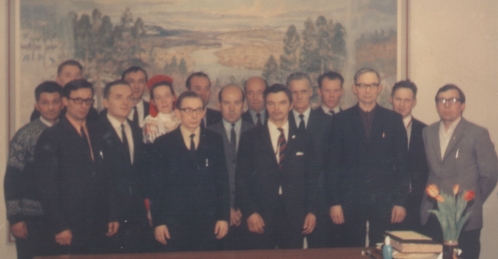 |
Karasjok local council, Hans Rønbeck is nr. 5 from the right. (Photo borrowed from The Sami Collections) |
Here you find all the articles in the series:
28.09.2007 Why Sami school history?
05.10.2007 Boundless ignorance
12.10.2007 Southerner-teachers encounter the Sami language
19.10.2007 The start of Sami beginner instruction
26.10.2007 The start of education in reindeer-herding
02.11.2007 From Sami to Norwegian vocational training
16.11.2007 Struggle for Sami gymnasium
28.11.2007 School experiences of Norwegian speaking Samis
14.12.2007 Resistence against Sami language and culture
25.01.2008 A strange world
23.05.2009 On Sami teachers
30.05.2009 Life in boarding school
06.06.2009 Sami pupils were bullied
13.06.2009 Sami content in the teaching
20.06.2009 Pupil as interpreter
04.07.2009 How the children quit speaking Sami
10.09.2010 God does not understand Sami
08.10.2010 The point of view of the Norwegianizers
13.10.2010 Men of the church defending the Sami language
02.12.2010 Sami teachers in old times
09.12.2010 Boarding school life in old times
18.12.2010 Sami pupils in special schools
14.01.2012 The parents' struggle for Sami education
21.01.2012 Reluctance and absence
28.01.2012 The school during the war
04.02.2012 Reconstruction and barrack schools
11.02.2012 Curriculums - for Norwegianization and for Sami school
18.02.2012 The great struggle of the curriculum
Sami school history 1
Sami school history 2
Sami school history 3
Sami school history 4
Sami school history 5
Sami school history - main page